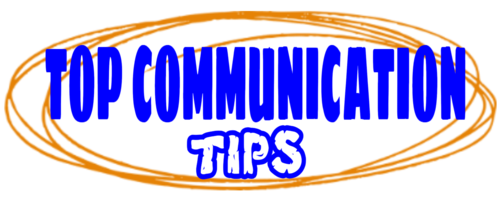Being in a relationship with a language barrier can present its fair share of challenges. Communication plays a vital role in any relationship, and when faced with the obstacles of cross-cultural dating, effective communication becomes even more critical. However, with the right strategies and tools in place, couples can overcome these challenges and build strong, multicultural relationships.
One of the tools that can greatly assist in navigating a language barrier relationship is the use of smart language translators like Jarvisen. These advanced devices allow partners to have meaningful conversations, breaking down the language barrier and promoting understanding. Additionally, carrying translation dictionaries can help in looking up unfamiliar words during conversations, further bridging the language gap.
Alongside translation tools, simplifying sentences and mastering nonverbal communication techniques can also enhance understanding between partners. Despite the linguistic differences, nonverbal cues such as gestures, facial expressions, and body language can convey emotions and messages effectively. It is important to remember that effective communication is the key to a successful relationship, even in the face of language barriers.
Key Takeaways:
- Effective communication is crucial in overcoming language barriers in relationships.
- Smart language translators like Jarvisen can facilitate day-to-day conversations between partners.
- Carrying translation dictionaries can help bridge the language gap by looking up unfamiliar words.
- Simplifying sentences and mastering nonverbal communication techniques can enhance understanding.
- Open and honest communication is essential for building strong, multicultural relationships.
Effective Communication Tools for Language Barrier Relationships
In language barrier relationships, effective communication tools play a crucial role in bridging the language gap and fostering understanding between partners. These tools can enhance daily conversations, facilitate comprehension, and create a stronger connection. Here are some essential communication tools for couples facing language barriers:
Jarvisen: Smart Language Translators
One of the most valuable tools for language barrier relationships is the Jarvisen smart language translator. This advanced device allows partners to communicate with each other seamlessly, regardless of their linguistic differences. With its real-time translation capabilities, Jarvisen enables couples to have meaningful conversations and express their thoughts and feelings. By eliminating the need for manual translations or waiting for an interpreter, Jarvisen enhances the immediacy and spontaneity of communication, fostering a deeper connection between partners.
Translation Dictionaries: Bridging the Language Gap
Translation dictionaries are another indispensable tool for couples in language barrier relationships. Carrying a pocket-sized dictionary allows partners to look up unfamiliar words or phrases during conversations. This not only helps in understanding the meaning of specific terms but also fosters active learning and language development. Translation dictionaries provide a quick reference and empower partners to proactively overcome language obstacles in real-time, opening the door to more effective communication.
Simplify Sentences: Enhancing Comprehension
When communicating in a language barrier relationship, simplifying sentences is key to ensuring effective comprehension. Using shorter sentences, avoiding complex grammar structures, and focusing on essential vocabulary increases the chances of understanding. Partners should prioritize clear and concise expressions to avoid confusion or misinterpretation. By simplifying sentences, partners can navigate the language barrier more easily, making it easier to convey their thoughts, emotions, and intentions.
Nonverbal Communication Techniques: Enhancing Understanding
Nonverbal communication offers an additional dimension to language barrier relationships. Partners can rely on nonverbal cues like facial expressions, gestures, and body language to convey their feelings and intentions. Techniques such as pantomiming, pointing, and using visual aids can greatly enhance understanding between partners. Incorporating these techniques into communication can complement verbal interactions and foster a deeper connection even without a shared language.
“Effective communication tools are essential in language barrier relationships. Smart language translators like Jarvisen, carrying translation dictionaries, simplifying sentences, and utilizing nonverbal communication techniques can bridge the language gap and strengthen the bond between partners.”
By utilizing these effective communication tools, language barrier relationships can thrive, enabling partners to build stronger connections and overcome linguistic obstacles. Whether it’s through innovative devices like Jarvisen, handy translation dictionaries, or adjusting communication styles, embracing these tools empowers couples to navigate the challenges of multilingual relationships with greater ease.
Tips for Effective Communication in Language Barrier Relationships
Efficient communication is crucial in language barrier relationships. To avoid misunderstandings and foster a strong connection, partners should employ various strategies. By speaking in a basic and conscious manner, partners can ensure that their messages are effectively conveyed. Using a dictionary to check meanings and asking for clarification when needed can also prevent misinterpretations that may arise due to language differences.
“Communication is the solvent of all problems and is the foundation for personal development.” – Peter Shepherd
In addition, having a “safe word” can be a helpful technique to deescalate arguments. When emotions run high, both partners can agree on a specific word or phrase that signals the need to pause and calm down before continuing the conversation. This technique allows for better emotional regulation and can prevent further misunderstandings or hurtful exchanges.
Couples in language barrier relationships can also develop their own unique language as a way to effectively communicate and express themselves. This special language can include gestures, inside jokes, or even a blend of both partners’ native languages. By finding a common language that is unique to their relationship, partners can enhance their understanding and strengthen their bond.
It is essential for partners to be aware of their language limitations and set realistic expectations. Learning a new language takes time, and it is crucial not to put unnecessary pressure on oneself or one’s partner. By being patient with the learning process and celebrating small victories along the way, couples can navigate the challenges of a multilingual relationship with resilience and positivity.
Key Tips for Efficient Communication in Language Barrier Relationships:
- Speak in a basic and conscious manner
- Use a dictionary for checking meanings
- Ask for clarification when needed
- Establish a “safe word” to deescalate arguments
- Develop a unique language within the relationship
- Be aware of language limitations and set realistic expectations
By following these tips, partners can foster efficient communication, avoid misunderstandings, and create a strong foundation for their language barrier relationship.
| Common Challenges in Language Barrier Relationships | Solutions for Effective Communication |
|---|---|
| Language misunderstandings | Speak clearly, use a dictionary, ask for clarification |
| Arguments or conflicts | Establish a “safe word” to deescalate situations |
| Language limitations | Develop a unique language within the relationship |
| Pressure to learn a new language quickly | Set realistic expectations and celebrate small victories |
Overcoming Language Barriers in Social Settings
When navigating social settings in a language barrier relationship, partners can face unique challenges. However, with the right strategies and support, it is possible to overcome these obstacles and foster meaningful connections. Here are some key approaches to help you overcome language barriers in social settings:
Seeking Your Partner’s Help
One of the most valuable resources in a language barrier relationship is the support of your partner. When attending social gatherings or events where language barriers may arise, it can be helpful to communicate with your partner beforehand. Share your concerns and discuss how they can assist you in navigating conversations and interactions. By working together as a team, you can feel more confident and comfortable in social settings.
Setting Boundaries
While it’s important to make an effort to communicate in the native language of the social setting, it’s also crucial to set realistic boundaries. Communicate with your partner and ensure they understand that full and immediate translation may not always be possible. Establishing these boundaries can manage expectations and alleviate any pressure or stress during social interactions. Remember, effective communication doesn’t always mean perfectly fluent communication.
Setting Realistic Goals for Language Learning
Language learning is a journey that takes time and effort. Instead of feeling overwhelmed by the prospect of becoming fluent in a new language, focus on setting realistic goals. Work with your partner to identify specific language skills or topics that are most relevant to your social settings. By concentrating on these areas, you can make steady progress and feel more confident in your ability to communicate effectively.
Remember, every step you take towards learning a new language is a step closer to bridging the communication gap in your relationship and forming deeper connections with others.
“Language is the key to connecting with others. Embrace the journey of language learning, and don’t be afraid to ask for help along the way.”
| Benefits of Partner’s Help | Importance of Setting Boundaries | Advantages of Realistic Goals |
|---|---|---|
| Increased confidence in social situationsImproved understanding of cultural nuancesEnhanced communication skills | Alleviates pressure and stressManages expectationsAllows for more organic interactions | Focuses efforts on practical language skillsBoosts motivation and sense of achievementReduces feelings of overwhelm |
Conclusion
In conclusion, effective communication strategies are key to navigating a language barrier relationship and fostering cross-cultural connections. Although language differences may present challenges, couples can overcome them by utilizing tools such as smart language translators and translation dictionaries.
Simplifying sentences and mastering nonverbal communication also play crucial roles in enhancing understanding between partners. By finding common ground and developing their own language, couples can bridge the gap and create meaningful connections.
Understanding the importance of communication and actively embracing cross-cultural connections can lead to a successful and fulfilling relationship, regardless of the language barrier. It is through effective communication that partners can truly understand and support each other, building a strong foundation for their relationship.
FAQ
How can language barriers affect a relationship?
Language barriers can create communication challenges and misunderstandings in a relationship, making it difficult for partners to understand each other effectively.
What tools can help overcome language barriers in a relationship?
Smart language translators like Jarvisen and translation dictionaries can be valuable tools for bridging the gap in language barrier relationships, enabling partners to communicate and understand each other better.
What are some effective communication tips for language barrier relationships?
To prevent misunderstandings, it is important to speak in a basic and conscious manner, use dictionaries to check meanings, ask for clarification when needed, and establish a safe word to deescalate arguments.
How can partners navigate social settings in a language barrier relationship?
Partners can communicate before social encounters, with the native language speaker providing support and guiding the other partner. Setting boundaries, having realistic language learning goals, and understanding limitations can also ease the pressures of social situations.
How can language barrier relationships be successfully navigated?
By utilizing effective communication strategies, such as using translation tools, simplifying sentences, mastering nonverbal communication, and finding common language as a couple, partners can overcome the challenges of a language barrier relationship and foster successful intercultural connections.





